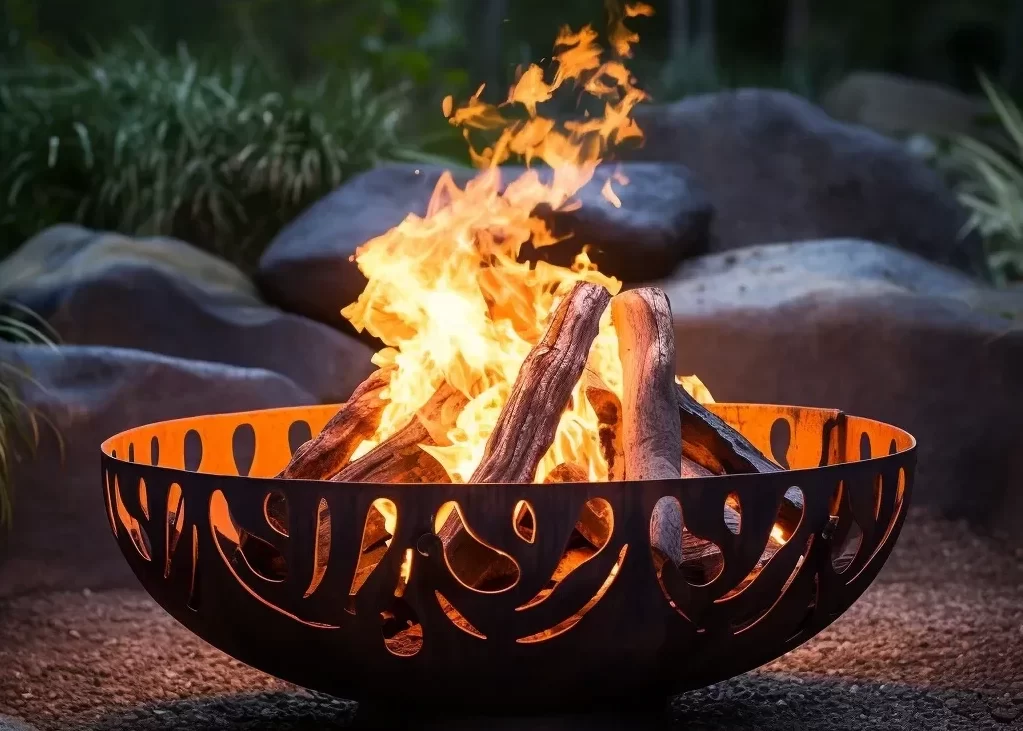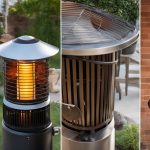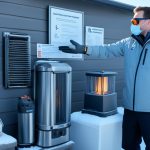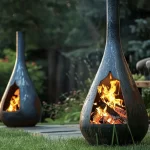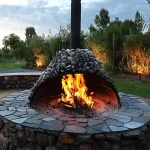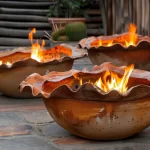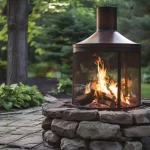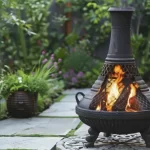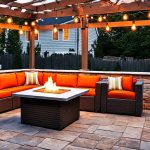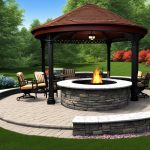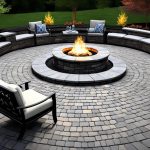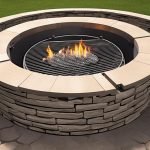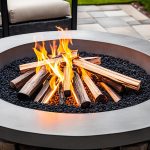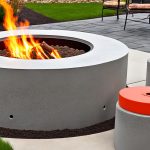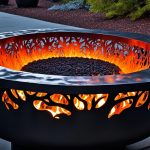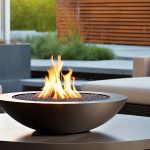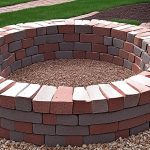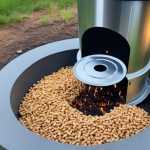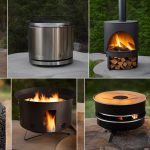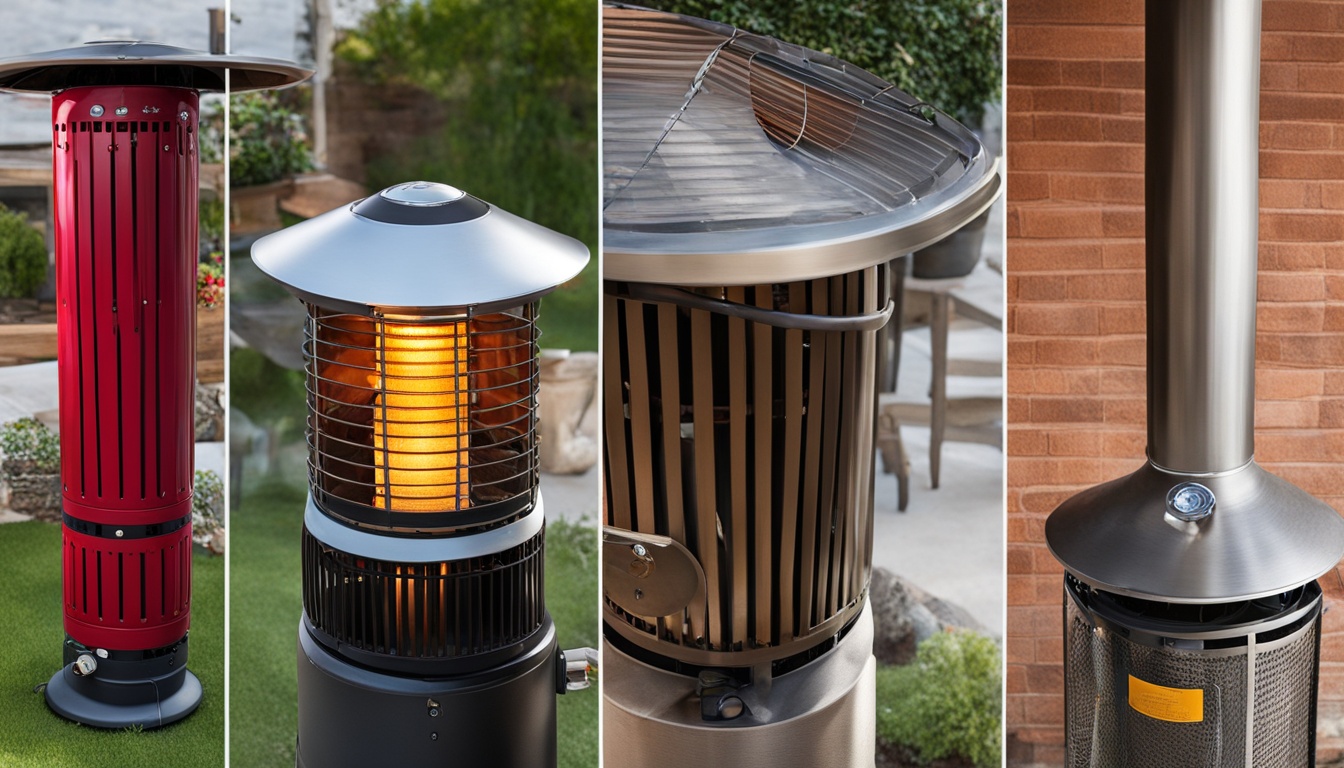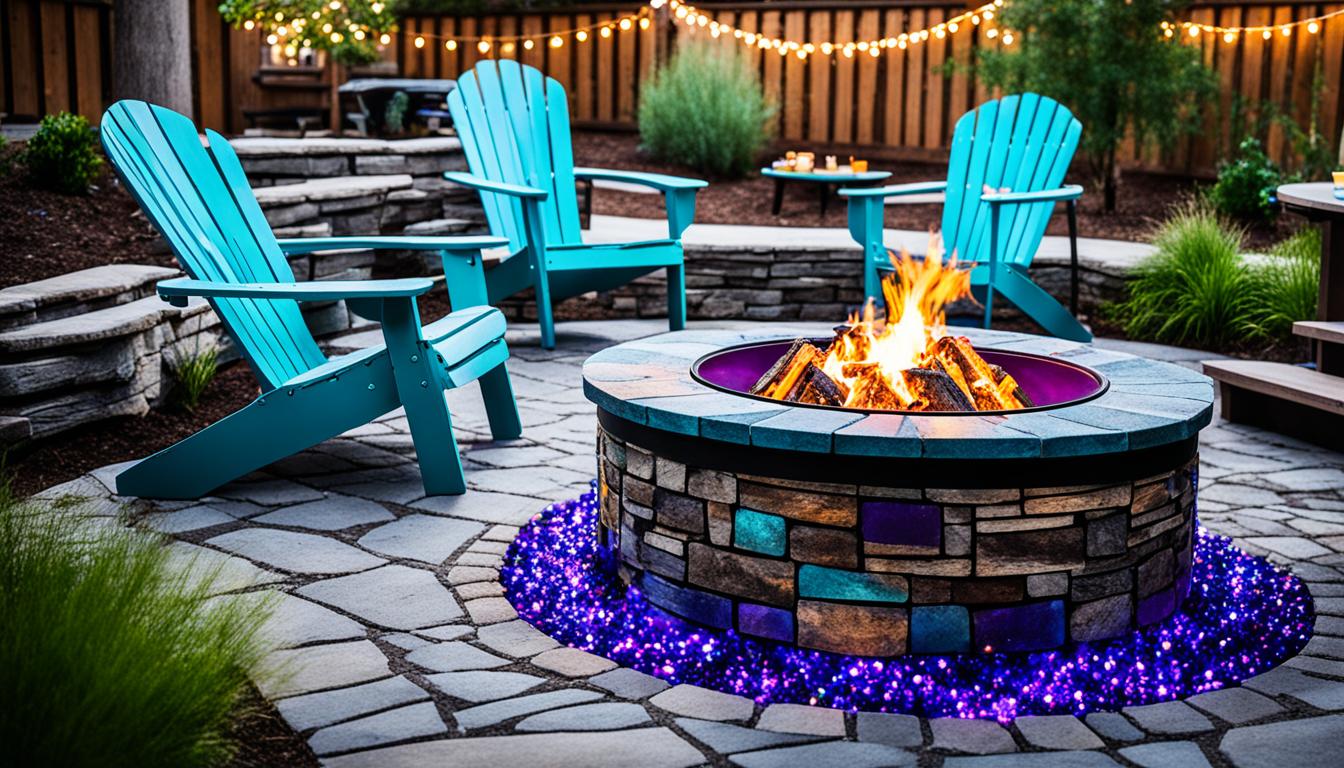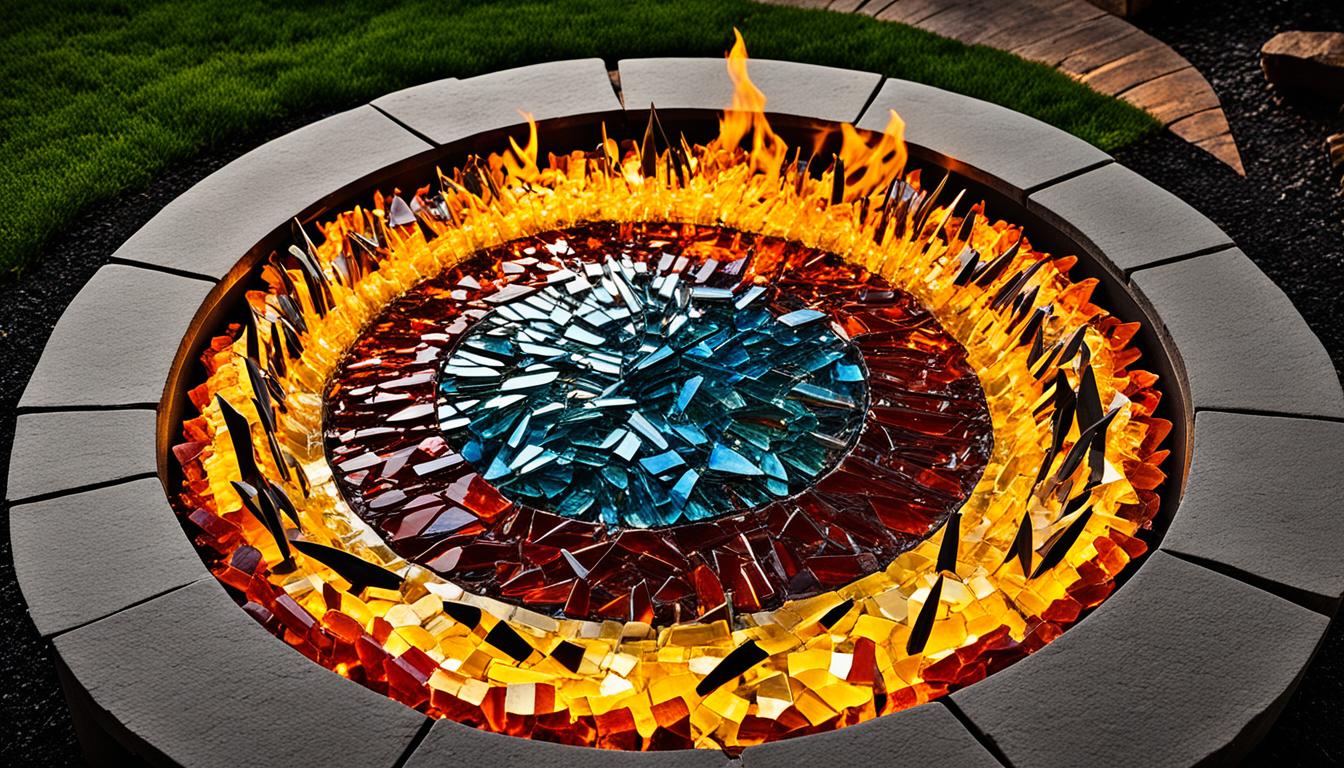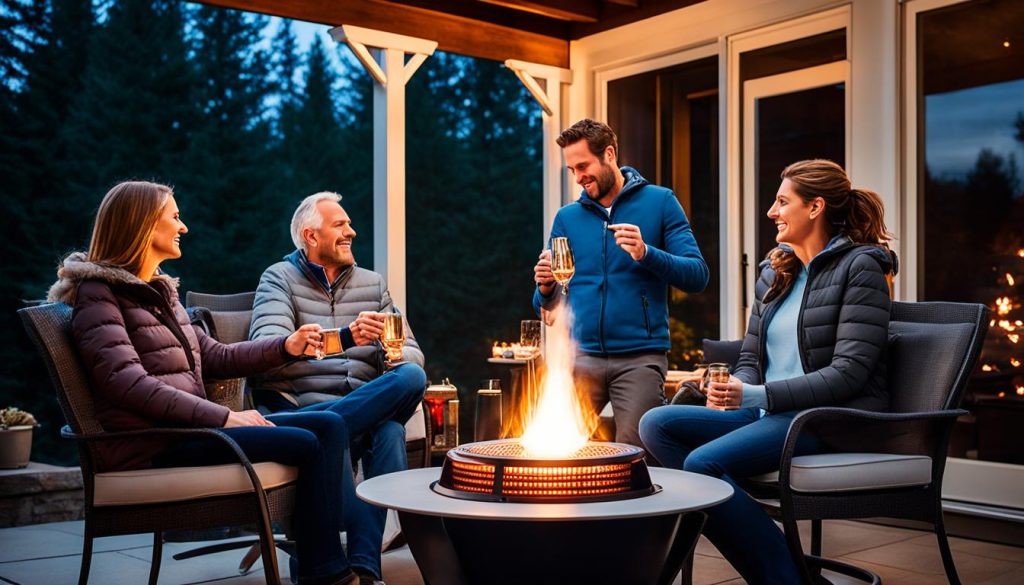
Did you know that traditional patio heaters are highly inefficient for outdoor use? In fact, a significant amount of heat is lost without walls and ceilings to contain it. This not only results in wasted energy but also leaves you feeling cold and uncomfortable during outdoor gatherings.
But don’t worry, there are energy-saving outdoor heaters available that can provide high-performance outdoor heating while being eco-friendly and cost-effective.
Key Takeaways:
- Traditional patio heaters are inefficient for outdoor use.
- Energy-saving outdoor heaters offer high-performance heating.
- Eco-friendly patio heaters are a cost-effective heating option.
The Importance of Choosing the Right Patio Heater
When it comes to creating a cozy outdoor living space, choosing the right patio heater is essential. Whether you want to enjoy your patio during cool evenings or extend your outdoor season, selecting the appropriate outdoor heating solution is crucial.
The size and dynamics of your outdoor space play a significant role in determining the heating requirements. Consider the size of your patio, whether it’s covered or uncovered, and the overall design aesthetic. Understanding these factors will help you choose the ideal patio heater that meets your specific needs.
There are various types of patio heaters available, each offering its own advantages and options. Wall-mounted, ceiling-mounted, and portable/freestanding heaters are popular choices that provide flexibility in placement and installation. The fuel type is another important consideration. Electric, natural gas, and propane heaters each have their own benefits and costs to take into account.
In addition to functionality, the design aesthetic of the patio heater can enhance your outdoor space. Some patio heaters come with integrated lighting options, allowing you to create a warm and inviting atmosphere for your outdoor gatherings.
By carefully considering the size, dynamics, and design aesthetic of your outdoor space, you can choose the perfect patio heater that will not only meet your heating requirements but also complement your outdoor living area.
In the next section, we will explore how to determine the number of patio heaters needed for your outdoor space.
How Many Patio Heaters Do You Need?
The number of patio heaters required for your outdoor space depends on several factors, including the size of the patio and your heating requirements. To ensure optimal comfort, it’s important to consider these factors when determining the number of patio heaters needed.
A general guideline is to have one patio heater for every 100 square feet of patio space. This provides sufficient heating coverage for most outdoor areas. However, it’s essential to take into account the specific characteristics of your patio to make an accurate calculation.
Consider the size and layout of your patio. If you have a larger patio or irregularly shaped outdoor space, you may need additional heaters to ensure even heating. On the other hand, smaller patios may require fewer heaters.
Another factor to consider is whether your patio is covered or uncovered. Covered patios provide some insulation and may retain heat better, requiring fewer heaters. Uncovered patios are more exposed to the elements and may need additional heaters for adequate warmth.
Additionally, the heating capabilities of the chosen patio heaters should be taken into consideration. Some patio heaters have higher heat output and can cover a larger area, while others may have a more limited range.
To determine the precise number of patio heaters needed for your outdoor space, it’s advisable to consult with professionals who specialize in outdoor heating solutions. They can assess your patio’s specific requirements and recommend the optimal number and placement of heaters.
Example:
A 500 square feet outdoor patio that is partially covered would generally require around 5 patio heaters. However, if the patio has an irregular shape or is exposed to significant draughts, additional heaters may be necessary. Consulting with experts would help determine the specific heating requirements for this outdoor area.
By considering the size of your patio, its layout, whether it’s covered or uncovered, and consulting professionals if needed, you can determine the appropriate number of patio heaters to keep your outdoor area comfortably warm.
| Patio Space | Number of Patio Heaters Recommended |
|---|---|
| Up to 100 sq ft | 1 |
| 101 – 200 sq ft | 2 |
| 201 – 300 sq ft | 3 |
| 301 – 400 sq ft | 4 |
| 401 – 500 sq ft | 5 |
Maximizing Heat Disbursement Efficiency
To ensure optimal performance and customer satisfaction, it is essential for business owners to maximize the heat disbursement efficiency of their outdoor heaters. Proper placement and strategic positioning play a significant role in achieving this goal.
When determining the placement of outdoor heaters, consider the distance between the heaters and customers. Ensuring an appropriate distance allows for efficient heat distribution, creating a comfortable outdoor experience. Additionally, consider the distance between heaters themselves to avoid overheating certain areas while leaving others colder.
The angle at which the heaters disperse heat is also important. Positioning the heaters at an angle that maximizes their coverage will help to evenly warm the outdoor space. The dimensions of the outdoor area, whether it’s a spacious patio or a cozy outdoor space, should be taken into account when deciding on the number and placement of heaters.
The type of heaters used, such as mushroom heaters or box heaters, can also impact heat disbursement efficiency. Mushroom heaters distribute heat in a circular pattern over a broader area, while box heaters provide more targeted warmth. Understanding the characteristics and capabilities of different heater types will help guide the placement decisions.
To showcase the optimal placement and disbursement of outdoor heaters, consider the following illustration:
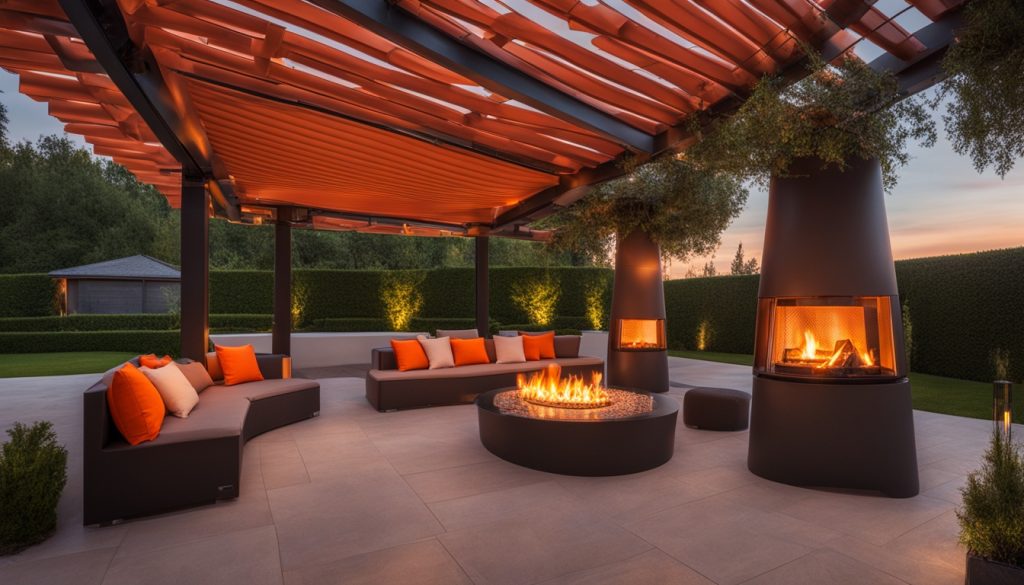
| Outdoor Area | Heater Type | Placement |
|---|---|---|
| Outdoor Patio | Mushroom Heater | Positioned in the center with an angle of 45 degrees for maximum coverage. |
| Outdoor Space | Box Heater | Strategically placed along the perimeter to provide targeted warmth to specific seating areas. |
By maximizing the heat disbursement efficiency of outdoor heaters, business owners can create a cozy and inviting outdoor experience for their customers. Taking into account factors such as distance, angle, dimensions, and heater type will help ensure that the outdoor space is comfortably heated, maximizing both customer satisfaction and enjoyment of the outdoor area.
Understanding Different Types of Outdoor Heaters
Outdoor heaters are available in various types, each with its own unique capabilities and benefits. By understanding the different types of outdoor heaters, you can choose the most suitable option for your outdoor area.
Mushroom Heaters
Mushroom heaters, also known as umbrella or patio heaters, are a popular choice for outdoor heating. They feature a mushroom-like design that disperses heat in a circular fashion, providing warmth over a greater distance. These heaters are efficient in heating larger outdoor areas, making them ideal for open spaces such as terraces, gardens, or patios.
Box Heaters
Box heaters, on the other hand, offer targeted heat disbursement. These heaters emit infrared rays that effectively warm the surrounding area, providing a cozy and comfortable outdoor experience. Box heaters are perfect for smaller outdoor spaces or areas that require focused heating, such as seating areas, outdoor dining spaces, or intimate gatherings.
Heat Sources
Outdoor heaters utilize different heat sources to generate warmth. The most common heat sources include natural gas, propane, and electricity. Natural gas heaters are connected to a gas line and offer a continuous and cost-effective heat supply. Propane heaters, on the other hand, use a propane tank for operation, providing a portable heating solution. Electric heaters are convenient and easy to use, requiring a power source for operation.
Both natural gas and propane heaters produce infrared rays that efficiently heat the surrounding outdoor area. These infrared rays are able to warm objects and people directly, rather than wasting heat on the surrounding air. This makes them a more efficient heat source compared to traditional heaters that warm the surrounding air, leading to heat loss and inefficiency.
Choosing the Right Heater for Your Outdoor Area
When selecting an outdoor heater, consider the size and layout of your outdoor space, as well as your specific heating needs. Mushroom heaters are best suited for larger open areas, while box heaters are more suitable for targeted heating. The choice of heat source may depend on factors such as availability, convenience, and cost. Electric heaters, for example, are more suitable for areas with easy access to power sources.
Take into account the aesthetics of the outdoor area as well. Some outdoor heaters come in sleek, modern designs that can enhance the overall look of your outdoor space. Additionally, consider factors like durability, weather resistance, and energy efficiency when making your decision.

Understanding the different types of outdoor heaters and their capabilities can help you make an informed decision and choose the right heater for your outdoor area. Whether you opt for a mushroom heater or a box heater, selecting the appropriate heat source and placement will ensure efficient heat disbursement and a cozy outdoor atmosphere.
Tips for Effective Outdoor Heater Placement
Effective outdoor heater placement is essential for customer satisfaction. Finding the right balance between providing sufficient warmth and avoiding overwhelming heat can significantly enhance the outdoor experience. Consider the height and positioning of the heaters in relation to the seating or mingling distance. Ensuring consistent heat distribution throughout the outdoor space is also important for maximum benefit.
When determining the placement of outdoor heaters, it is crucial to measure the outdoor patio and assess the heating requirements. By determining the minimum heat-throw distance, you can ensure that the heaters warm the area thoroughly. Purchasing the appropriate number of heaters will depend on the size of the outdoor space, ensuring that every corner benefits from the warmth. It is advisable to allow slight overlap between heaters to maintain consistent warmth and avoid potential cold spots.
Consider the insulation and exposure of the outdoor space to determine the optimal distance between heaters. If the outdoor patio is exposed to the elements, more heaters or strategically placed heaters may be necessary to compensate for heat loss. On the other hand, well-insulated outdoor spaces may require fewer heaters for efficient heating.
Expert Tip: Creating Comfort Zones
Consider delineating different areas or zones within the outdoor space and placing heaters accordingly. For example, if there is a seating area and a dining area, position heaters closer to the seating area to ensure maximum comfort while diners are seated. This creates cozy pockets of warmth, allowing guests to fully enjoy their outdoor experience while avoiding unnecessary heat disbursement.
By carefully considering the height, distance, and number of heaters, you can effectively distribute heat throughout your outdoor space and maximize customer satisfaction. Remember to regularly assess and adjust the placement of heaters as needed, especially as the outdoor environment changes with the seasons.
Conclusion
Maximizing patio heater efficiency is essential for creating cozy and comfortable outdoor evenings while also being mindful of energy consumption and cost. When selecting outdoor heaters, consider the type of heater that best suits your needs, taking into account the size and layout of your outdoor space and your specific heating requirements.
To enhance your outdoor experience, create the right ambience by choosing heaters that provide both warmth and aesthetic appeal. Additionally, reducing draughts and ensuring sufficient warmth for your feet can optimize your comfort. By following these energy-smart heating tips, you can create a cost-effective heating solution that maximizes warmth and efficiency.
Whether you’re enjoying a quiet evening on your outdoor patio or hosting a gathering with friends and family, implementing these strategies will ensure you can make the most of your outdoor space throughout the year. Prioritize patio heater efficiency to create a cozy and inviting environment, allowing you to fully enjoy the beauty of the outdoors without compromising on warmth and comfort.
Recommended
- Buy Solo Stove: Find Your the Best Retailer Online
- Master How to Use Solo Stove – Tips & Tricks
- Understanding How Solo Stove Works | Eco-Friendly Tech

Otis, 52, embodies a lifetime of adventure, from the rugged hills of the USA to serene camping spots worldwide. His passion for the outdoors isn’t just a hobby; it’s a way of life that includes hiking, camping, and exploring the unknown. With decades of experiences under his belt, Otis shares his adventures and lessons learned through Natural Fire Pit. Beyond fire pits, his expertise in outdoor living, from setting up the perfect tent to finding off-the-beaten-path travel destinations, guides fellow enthusiasts. Follow Otis’s journey for a deeper connection with nature.
